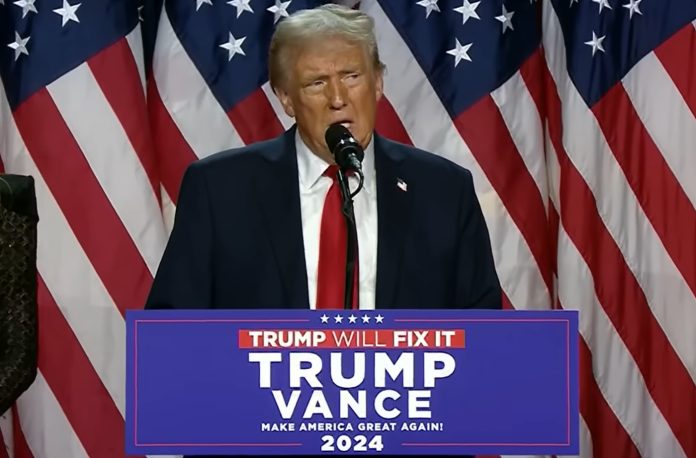
With the 2024 presidential election results in, Donald Trump is set to return to the White House, marking a historic, and controversial, comeback. As President Biden and the Democrats prepare to step down, many Americans are wondering what the next few months will bring. Here’s a breakdown of what U.S. citizens can expect during the transition of power and early Trump administration priorities.
1. The Transition of Power
The transition between administrations will unfold over the next two months, leading up to Trump’s January inauguration. During this time, the Biden administration will work with Trump’s transition team to ensure a smooth handover across government departments, from national security to economic policy. Expect to see some policy “rollbacks” as Trump’s team prepares to reverse various Biden-era regulations, especially in areas like energy, transportation and foreign relations. Plans also include pardoning those who were arrested for the January 6, 2021 riot in the Capitol.
2. Changes in Cabinet and Key Appointments
Trump will begin to announce his choices for key cabinet positions and advisors, some of whom may be returning figures from his first administration. This process will attract significant scrutiny and could bring familiar faces back to Washington, particularly in departments tied to Trump’s core priorities, like immigration, defense, and finance. In areas where Biden implemented progressive reforms, such as climate change, health care, and immigration, Trump may select appointees with clear directives to alter or reverse these initiatives.
The president-elect is also expected to fire the Consumer Financial Protection Bureau director, Rohit Chopra, who was appointed by Biden, soon after taking office. There is currently controversy over Trump’s directive for the new Congress to make several recess appointments, bypassing required bipartisan approval of key government leadership appointees.
3. Shift in Domestic Policy Priorities
As he returns to office, Trump is expected to focus on areas that defined his first term: immigration reform, economic deregulation, and tax policies favorable to businesses. Immigration, especially, may see swift changes as Trump reintroduces policies designed to limit undocumented immigration, revamp border control strategies and introduce a deportation push against migrants. We might also see attempts to amend existing health care policies, with Trump aiming to revisit aspects of the Affordable Care Act.
Expect economic policies aimed at stimulating growth through business-friendly tax cuts and a push for job creation, particularly in manufacturing and energy. If inflation remains high, Trump will likely prioritize cutting regulations and encouraging domestic production to counteract rising costs.
4. International Relations and Foreign Policy Adjustments
On the international stage, Trump’s return could mean shifts in the U.S.’s relationships with both allies and adversaries. Relations with NATO, the EU, and the UN might once again be subject to his 2020 era “America First” approach, which could create tension around funding and military commitments. Trade policies, particularly with China, are likely to return to Trump’s previous hard-line stance, possibly impacting global markets and trade agreements. The cost of living may increase as the weight of tariffs levied on import products is passed back to American consumers.
5. Judicial Appointments and Legislative Strategy
Trump’s second term could further shape the judiciary, as he may have the opportunity to nominate more federal judges and potentially up to two Supreme Court justices, cementing a conservative tilt in the courts for decades to come. Legislative priorities will likely focus on reworking Biden-era policies, and if the Republican party controls Congress, expect fast-tracked legislation on issues like tax reform, energy independence, and voting laws.
6. National Security and Law Enforcement Focus
Trump has indicated a commitment to bolstering national security and law enforcement, which could include increased funding for police departments and federal agencies. Policies aimed at combating drug trafficking and gang activity might expand. Surveillance and cyber-security may also receive more resources as threats to national infrastructure, both domestic and foreign, become a growing focus. Trump has also made his stance on AI clear, so Americans can likely expect some restrictions there as well.
7. Potential Public Response and Political Tensions
Given the deeply polarized political climate, Trump’s win has already sparked debate and protests among Democrats and independents, particularly women, the LGBTQ+ community and people of color, some of whom view his return with real concern for their safety and livelihood. With his criminal background and many believing he orchestrated the January 6, 2021 riots, many Americans outside of the aforementioned groups are also nervous for his return, questioning whether the former president can be trusted to help all citizens.
This period could see an increase in political activism from both sides, with Trump’s supporters energized and opponents vigilant in opposition. National tensions might be high, especially as Democrats reorganize for future elections and recalibrate their strategies in response to Trump’s victory.
As we enter this transition period, it’s clear that Trump’s return will bring significant shifts across the U.S. political landscape, both domestically and abroad. With policy reversals and renewed conservative initiatives likely, Americans can expect an eventful few months as the Trump administration prepares to take the reins once again.
































